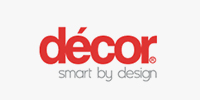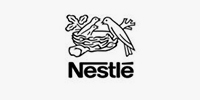How to Recycle Used Plastic Bottles?
The industry has three concepts for the recycling and utilization of plastic bottles, namely, direct utilization, conversion utilization, and biodegradation.
Direct utilization
The processing of empty plastic bottles recycling is mainly a physical process, that is, the addition of additives or color masterbatches, which is basically a physical mixing process. After the plastic slices or pellets are heated and melted, the injection-molded product, the injection blow molded product, or the extrusion blow molding to form a film or the extrusion casting sheet to stretch to form a film. Examples of injection molded products are foam packaging materials (blocks), examples of injection blow molded products are various plastic packaging bottles, and examples of extrusion blow molding films are multi-layer co-extruded film products such as heat-shrinkable film, cling film, and extruded Examples of stretched cast films are biaxially oriented polypropylene film BOPP and biaxially oriented polyester film BOPET. Because all the changes in the material in the above process are physical changes, and its chemical structure remains unchanged, this provides convenience for the application of its scraps. Therefore, in plastic product production plants, the leftover materials in production are generally crushed, extruded and pelletized, or melted and then extruded and pelletized, and then put into the production line for continued use. Because of this, crushers and granulators are essential equipment in the plastics industry. However, this method has a limitation, that is, the plastic products should be single-component or the physical properties of the components have little difference, which does not affect the secondary physical processing. For example, according to a US company, the barrier effect of PET beer bottles made of EVOH as a sandwich can reach the level of glass bottles and can be completely recycled.
However, for most multi-layer composite films or multi-layer co-extruded films, the physical and chemical properties of the materials of each layer are quite different and cannot be directly recycled.
Conversion utilization
As the name suggests, it is used for other purposes. Contains both chemical and physical methods.
Chemical conversion
Chemical methods can be divided into two types: The first method is to use the chemical properties of polymers to convert polymers into small molecular compounds or simple compounds. For example, polyester can be converted into monomers or small molecule compounds by hydrolysis, alcoholysis, or aminolysis. The hydrolysis reaction is the reverse reaction of the polyester synthesis reaction, which can be made into terephthalic acid and ethylene glycol (polyester synthetic raw material monomer); methanol alcoholysis can produce methyl terephthalate and ethylene glycol; glycol alcohol The product of the solution is bishydroxyethyl terephthalate; the alcoholysis of propylene glycol produces oligomers, which are used to synthesize unsaturated polyesters (for paints or inks) and alkyd resins. Another method is to use the flammability of plastics to generate heat to generate electricity after incineration. These two methods have their own advantages and disadvantages. The chemical decomposition method has a high utilization rate of resources, but the process is complicated and the cost is high, which affects the recycling of plastic products. The waste gas from incineration, such as the chlorine-containing gas produced by the combustion of PVC (polyvinyl chloride film), is a component of acid rain. In addition, many plastics produce waste gas due to incomplete combustion, which is very harmful to the environment and human health. This method has a tendency to be eliminated.
Physical conversion utilization
Similar to direct use, the difference is that the latter is used by the manufacturer, and the former is used by other manufacturers. The process is also crushing-pelletizing-extrusion molding (stretching) or injection molding, etc., adding other items when necessary.
Biodegradable
Since plastic products are not easy to age and are difficult to be decomposed by microorganisms, so-called white pollution is caused. Instead of passive processing, it is better to find a way from the source, and because of this, the plastics industry attaches great importance to the research and development of biodegradable plastics. At present, there are almost no varieties that are satisfactory in terms of performance and biodegradability. To truly realize industrialization, there is still a long way to go.
Plastic squeeze bottles are one of the plastic bottles, and the above recycling methods can also be adopted. Our plastic squeeze bottles are made of biodegradable materials, which can play a great role in reusing plastic bottles this piece.
As a professional plastic squeeze bottle manufacturer, we have more than 27 years of experience in producing plastic squeeze bottles of various shapes, colors, and materials. We have our own R&D team to support the various needs of customers. If you have corresponding needs and want to know about our products, please contact us immediately!





























